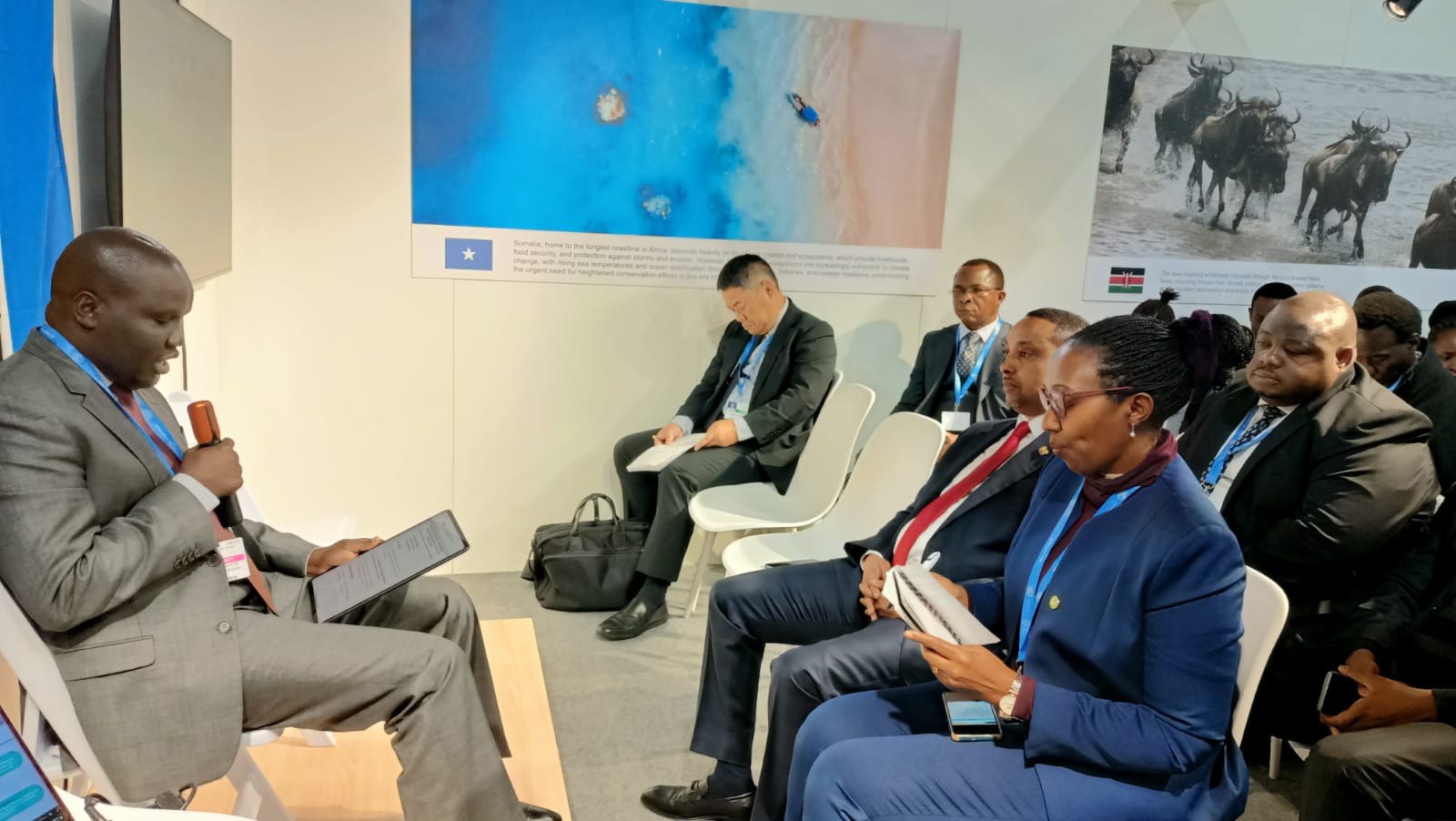
The East Africa Community Deputy Secretary-General for Infrastructure, Productive, Social, and Political Sectors Andrea Ariik, has underscored the critical role of inland waterway transport in achieving sustainable development across East Africa.
Speaking at a COP29 side event hosted by the EAC Secretariat and the Lake Victoria Basin Commission (LVBC), Ariik outlined the transformative potential of this eco-friendly transportation mode.
Lake Victoria Basin Commission Deputy Executive Secretary Coletha Ruhamya moderated the event.
Kenya’s EAC Principal Secretary Abdi Dubat was among the panellists.
“Inland waterways provide a competitive, energy-efficient, and environmentally friendly alternative to road and rail transport,” said Ariik at the ongoing COP 29 in Baku, Azerbaijan.
He emphasized that waterway transport consumes up to six times less energy than road transport and produces significantly lower CO2 emissions, presenting a viable solution for reducing the region’s carbon footprint.
The economic advantages of inland waterways are equally compelling.
Ariik noted that the sector offers cost savings of 30 per cent to 60 per cent compared to road and rail, enabling the movement of diverse cargo.
“Inland shipping is highly flexible and predictable, with fewer interruptions, making it ideal for transporting bulk and specialized goods,” he remarked.
The EAC region has witnessed notable progress in enhancing inland waterway infrastructure.
Ariik highlighted key developments, including the renovation of major ports like Kisumu, Mwanza, and Port Bell, the construction of Uganda’s Bukasa Port, and rehabilitating vessels such as the MV Uhuru I and II.
“These upgrades have significantly improved the navigability of Lake Victoria, unlocking an estimated $60 billion in annual trade and enhancing the tourism sector,” he said.
The addition of fuel tankers, MT Kabaka Mutebi II and MT Elgon, has further reduced environmental impact by taking 300 fuel trucks off the roads.
Ariik underscored the potential of the Akagera and Nile rivers to transform regional connectivity, particularly for landlocked nations like Rwanda and South Sudan.
He added:
“Fully developing these waterways could drive economic growth by optimizing the continent’s natural resources.”
Despite the strides, the sector faces significant challenges, including insufficient investment, outdated navigational aids, and a shortage of skilled personnel.
Ariik called for greater collaboration between development partners and EAC member states to address these issues, stressing the importance of public-private partnerships.
“By learning from global best practices and securing sustainable financing models, we can unlock the full potential of inland waterway transport,” he concluded, urging delegates to champion this transformative agenda.
The call to action was clear: inland waterways must become a cornerstone of East Africa’s sustainable development strategy.
CAPTION; East Africa Community Deputy Secretary-General for Infrastructure, Productive, Social, and Political Sectors Andrea Ariik making his opening remarks during the event. HANDOUT












